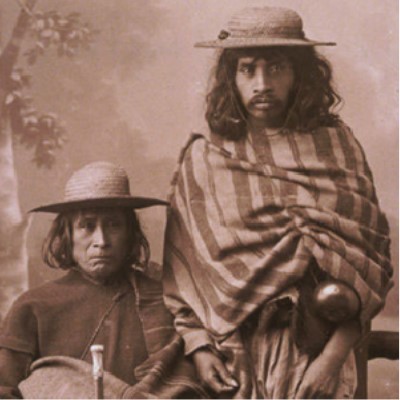Mexico: From Empire to Revolution
This photographic archive, based on an exhibition and the Getty Institute’s collections, presents the work of some 30 photographers, both Mexican and non-Mexican, produced between 1857 and 1923. By making hundreds of photographs available and placing them in a clear, historical context, the website provides students with a fascinating perspective on several crucial decades in Mexican history.
The website includes maps of Mexico City, the Yucat?Peninsula, and the nation as a whole; biographical information on all of the photographers included in the site; and a “Chronology,” which plots some of the central events in Mexican history along a timeline and illustrates them with 28 photographs from the collection. The centerpiece of the website, though, is the “History” section which contains all of the photographs organized in chronological order and accompanied by a basic narrative history. This section is divided into two parts: “Empire and Nation,” with ten chapters covering the period from 1857 to 1910, and “Revolution,” with 16 chapters covering the eventful years of 1910 to 1923. Among the many topics illuminated by the photographs are the French Intervention in Mexico during the 1860s as well as the eventual victory of Benito Juarez and the execution of Emperor Maximilian. Photographs also address: efforts of 19th-century archaeologists to explore the ancient Mayan ruins, daily life during the Pofirian dictatorship of 1876 to 1911, and the complex trajectory of the Mexican Revolution.
Mexico: From Empire to Revolution can be viewed either as a basic HTML site or as a “Flash” site with more sophisticated animation. Either way, it is well designed and extremely easy to use. The photos are clearly reproduced and can be easily enlarged; complete captions are one click away; and the relationship between text and photograph is always readily apparent. Within the text, important names and terms are highlighted and linked to useful glossary entries, so that even novices in Mexican history should have no trouble following the narrative.
While the historical narrative provides a useful context for the photographs, it is also potentially problematic for teachers. The version of Mexican history it presents is quite simplistic, on the order of an elementary textbook. By telling a straightforward story, the narrative tends unfortunately to suppress the more complex questions of historical interpretation raised by the photographs. Thus, teachers need to pose these questions to students before they access the website, and they need to encourage students to “read” the photographs themselves, rather than relying on the text. For example, while the historical narrative depicts the Mexican Revolution as a simple class conflict, the photographs suggest a more complex reality. While the leaders of revolutionary factions were drawn from different classes, the masses who followed these leaders into battle were not so easily distinguished by class. More important were differences of ethnicity, culture, and geographical region. To get at these issues, teachers might ask students to compare the photographic depictions of the followers of different leaders, including Emiliano Zapata, Pancho Villa, Venustiano Carranza, and Pascual Orozco. By paying attention to forms of dress and other subtleties, students would be able to problematize the simplistic account in the text. Teachers might also ask students to consider the audience for the photographs. For example, students might examine how Walter Horne’s photgraphic postcards of Pancho Villa’s 1916 raid of Columbus, New Mexico, packaged this event for the American market.
